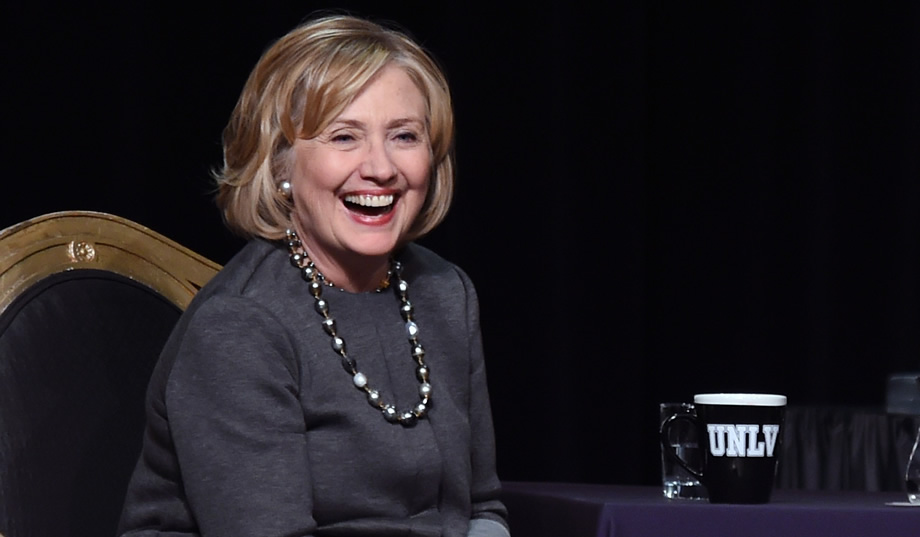
Clinton faces choices on campaign strategy
A pair of articles this morning help to illuminate some of the strategic choices former Secretary of State Hillary Clinton faces as the presumed Democratic nominee. First up, National Journal explains one set of options - veer towards the center or tack left:
How Clinton Could Score With GOP Moderates
On paper, Clinton is in an enviable position, running against an opponent with the highest unfavorable ratings of any presidential candidate in the history of polling. That advantage provides her with a dizzying array of choices for how to run her own race.
She could use the opportunity to build bridges with moderate anti-Trump Republicans in hopes of running up the score in November and claiming valuable political capital as president. A convincing win of at least 7 points would likely give her a healthy Senate majority, an outside possibility at winning the House, and the ability to get things done once elected. Such a strategy would take a page out of her husband’s triangulating playbook, and could potentially soften her persistent negatives with the upscale faction of Republicans deeply dissatisfied with Trump....
The other option: She could satisfy a restless progressive base—convinced the general election is hers to lose—and continue to make policy concessions to disgruntled Bernie Sanders voters. Such a move would help unite a party that’s been drifting leftward. Moderates in both parties wouldn’t have anywhere else to go, given that Trump is their only other choice.
Bloomberg Politics also has an article explaining a choice Clinton appears to have already made: how to address presumed Republican nominee Donald Trump's frequently-shifting policy positions:
As Hillary Clinton's campaign focuses its attacks on presumptive Republican nominee Donald Trump, she faces the challenge of pinning down someone who rapidly shifts positions on issues, sometimes within a single day.
The Republican's evasiveness confounded his primary rivals, who one by one ceded their greatest advantages as they tried to compete with Trump for the media spotlight.
Now, Clinton, the likely Democratic nominee, is attempting to use Trump's shape-shifting to convince voters that he's too much of a risk. Whether Clinton can succeed where Trump's Republican opponents failed will depend on how well she can target her fellow New Yorker for what he's actually proposed, without being drawn into the former reality television star's circus.
“We’re going to pin him down by taking him at his word, and making his words count,” said Joel Benenson, a senior strategist for Clinton’s campaign. “It’s reinforcing what people believe about him—that Trump is always about Trump.”
Benenson signaled one of the campaign's central lines of attack by repeatedly referring to Trump as a “risk” when it comes to America's national security and to the economic stability of its families. “Americans don't believe he’s prepared for the role because of what he’s said,” Benenson, a former Obama pollster, said. “This is not some judgment they’ve made from a distance. They’ve seen this guy.”
Both articles are worth taking a look at for anyone wanting a better understanding of what to expect in the months ahead.



